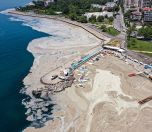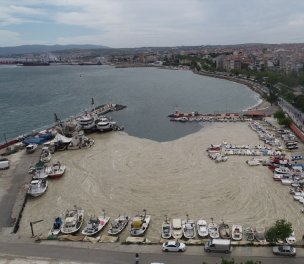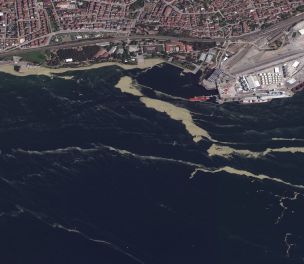* Photos: Alper Altay
Click to read the article in Turkish
In the district of Mudanya in Bursa, Alper Altay took the pictures of the sea snot/ mucilage accumulating in the Sea of Marmara. The pictures taken by the dentist from a boat reveal how dense the mucilage is.
Altay says that when he went to the Güzelyalı Marina to check his boat last month, he saw an unusual scene. At first, he thought there was a concrete layer on the marina. He says, "It was like the entire marina was covered in a concrete-like material. I saw a slight movement when I approached it. I was surprised. I didn't think that the mucilage would be so dense."
CLICK - Ministry unveils action plan to tackle the sea snot problem
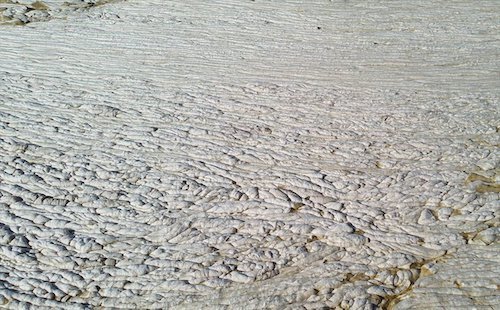
'Our damage to nature is unending'
Speaking to the state-run Anadolu Agency (AA), Altay says he realized that the layer got dense and was folded by the waves:
"I got on a boat, put my foot down and looked at it. It was like a sponge, or a thicker layer than that. When the layer on top parted, there came an unpleasant smell of algae. When I went there more recently, I saw that this thick layer dissipated and the marina was all green.
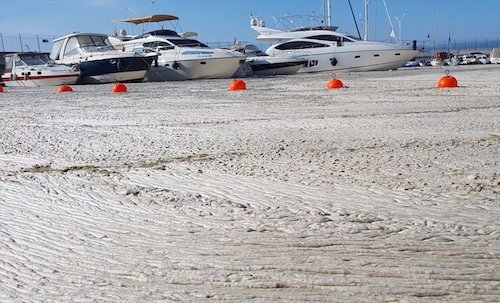
"It was not possible to see five centimeters below the surface. It has probably caused great damage underwater. This needs to be prevented in some way. It depends on humanity. Our damage to nature is unending.
'Very sad and disappointing'
"We are talking about an immense sea. We had a lockdown period when there were fewer people on the sea coast. If that was what happened in spite of this, I wonder what will happen in the long term.
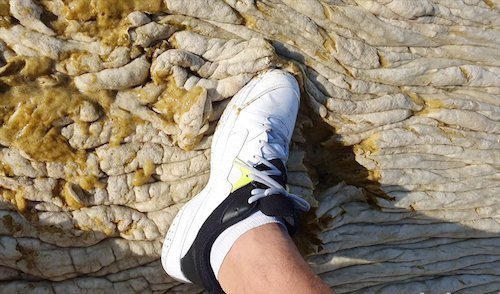
"I hope that it will be an organic residue and nature can destroy it by itself. If this is a chemical residue, we will see greater effects in the long run. It is highly sad and extremely disappointing."
What is mucilage, and why does it emerge?The mucilage, defined by fishermen as "nez", foam or snot, is the intense proliferation and color spiral of Gonyaulax fragilis, a type of phytoplankton from one-celled plant creatures. Although mucilage, which shows itself more in calmer seas, is natural, it can damage the ecosystem when it grows excessively. The Turkish Marine Research Foundation (TÜDAV) states that this yellow, white, colored mud-like substance has been seen and spread frequently above and below the water in the Black Sea, Marmara, and Aegean Seas in the last two years. The Marmara Environmental Monitoring Project (MAREM), which has been drawing attention to the mucilage problem in the Sea of Marmara since 2007, points out that such anomalies are an indicator of the level of pollution in the sea. Project manager Levent Artüz emphasizes that mucilage, which has a very sticky and contagious structure, can bring the end of life in the sea. Stating that the vast majority of fish eggs are found on the surface of the sea and the eggs on the surface lose their chance of survival by being trapped in the mucilage, Artüz says the same is true for the larvae. According to the information Artüz conveyed in 1+1 Forum, the mucilage collapses over time on creatures that cannot move such as mussels, oysters, and tunicates and covers the sea meadows and cuts off their contact with light. On the other hand, experts explain the causes of mucilage as the loss of oxygen in the sea due to filling the coasts and wastes and the rise in temperatures in the Mediterranean Basin due to global climate change. What about the Sea of Marmara?Looking at the sea surface temperature data, the temperature of the Sea of Marmara this year is 2.5 degrees above the average of 40 years, in other words, there is an anomaly of 2.5 degrees. Around 25 million people live around the Sea of Marmara. Nearly half of Turkey's industry is located around it as well. In other words, all domestic, industrial, and agricultural wastes go directly or indirectly to the Sea of Marmara. What should be done?Scientists say that the most important thing to do against mucilage is not to dump untreated waste into Marmara. Another suggestion is to start work as soon as possible to develop a new waste management policy that also takes into account climate change. |
(TP/SD)





sa.jpg)
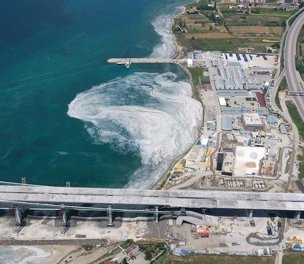

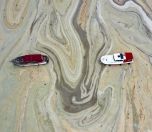
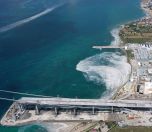
as.jpg)
